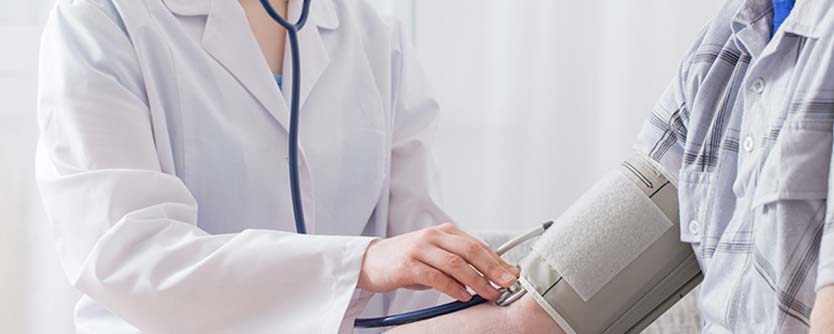Hypertension or high blood pressure is one of the most common health problems in the world. It is caused by
[the_ad id=”6157″]unmanageable stress and anxiety, lack of sleep and unhealthy lifestyle. Making an effort to prevent high blood pressure can reduce your risk of heart attack, stroke, and other serious illnesses. If you are at risk for hypertension, follow the given below steps to prevent it.
1. Lose extra pounds and watch your waistline – Blood pressure often increases as weight increases. Weight loss is one of the most effective lifestyle changes for controlling blood pressure. Besides shedding pounds, you generally should also keep an eye on your waistline. Carrying too much weight around your waist can put you at greater risk of high blood pressure.
2. Eat a healthy balanced diet – Eating healthy foods can help keep your blood pressure under control. The DASH (Dietary Approaches to Stop Hypertension) diet is a lifelong approach to healthy eating that’s designed to help treat or prevent high blood pressure (hypertension). The DASH diet encourages you to reduce the sodium in your diet and eat a variety of foods rich in nutrients that help lower blood pressure, such as potassium rich foods (such as potatoes, sweet potatoes, bananas, almonds, apricots, beans, fat free milk, yogurt, fish, citrus fruits like lemon, gooseberry, oranges, tomatoes), calcium (dark leafy greens, cheese, low-fat milk, broccoli, green beans, almonds, dried figs, oranges, sesame seeds) and magnesium (dark leafy greens like spinach; nuts like almonds, walnuts; seeds like pumpkin seeds, sesame seeds; fish, beans, avocados, yogurt, bananas, figs, banana). The DASH diet emphasizes vegetables, fruits and low-fat dairy foods — and moderate amounts of whole grains, fish, poultry and nuts.
It is not easy to change your eating habits, but with few tips you can adopt a healthy diet like
- Keep a food diary (writing down what you eat, even for just a week, can actually reflect your true eating habits),
- Consider low salt and high potassium foods,
- Be a smart shopper (read food labels when you shop,
- Stick to your healthy-eating plan when you’re dining out, too), and
- Watch portion sizes, especially when it comes to dairy, meat and processed starchy foods.
3. Reduce sodium in your diet – Eating a low-sodium diet can help keep blood pressure normal. The higher the sodium intake, the higher the blood pressure. You can cut back on your total salt intake by avoiding high-sodium packaged and processed foods and not adding extra salt to your meals. To decrease sodium in your diet, consider some tips like
- Read food labels (choose low-sodium alternatives),
- Don’t add salt (instead use herbs or spices to add flavor to your food),
- Remove salt shaker from the table, and
Standard DASH diet. You can consume up to 2,300 milligrams (mg) of sodium a day.
Lower sodium DASH diet. You can consume up to 1,500 mg of sodium a day.Water – When you drink enough water, the kidneys flush out the extra sodium in your body, helping to reduce your blood pressure.
4. Reduce your stress – Chronic stress is an important contributor to high blood pressure. Occasional stress also can contribute to high blood pressure if you react to stress by eating unhealthy food, drinking alcohol, caffeinated and carbonated beverages or inadequate sleep. Once you know what’s causing your stress, consider how you can eliminate or reduce stress.
5. Limit the intake of alcohol – Drinking too much alcohol can lead to high blood pressure. It can also reduce the effectiveness of blood pressure medications.
6. Go tobacco-free – Smoking and tobacco consumption constricts the blood vessels, which leads to high blood pressure. Each cigarette you smoke increases your blood pressure for many minutes after you finish. Quitting smoking helps your blood pressure return to normal.
7. Exercise regularly – Get moving to prevent hypertension. The more exercise you get, the better, but even a little bit can help control blood pressure. Swimming, yoga, walking and even dancing helps stabilize your blood pressure and bring it back to normal.
8. Monitor your blood pressure – Make sure that you have your blood pressure measured regularly. High blood pressure often occurs with no symptoms, so only blood pressure readings will tell you if your blood pressure is on the rise. Home monitoring can help you keep a check on your blood pressure and alert you and your doctor to potential health complications.

